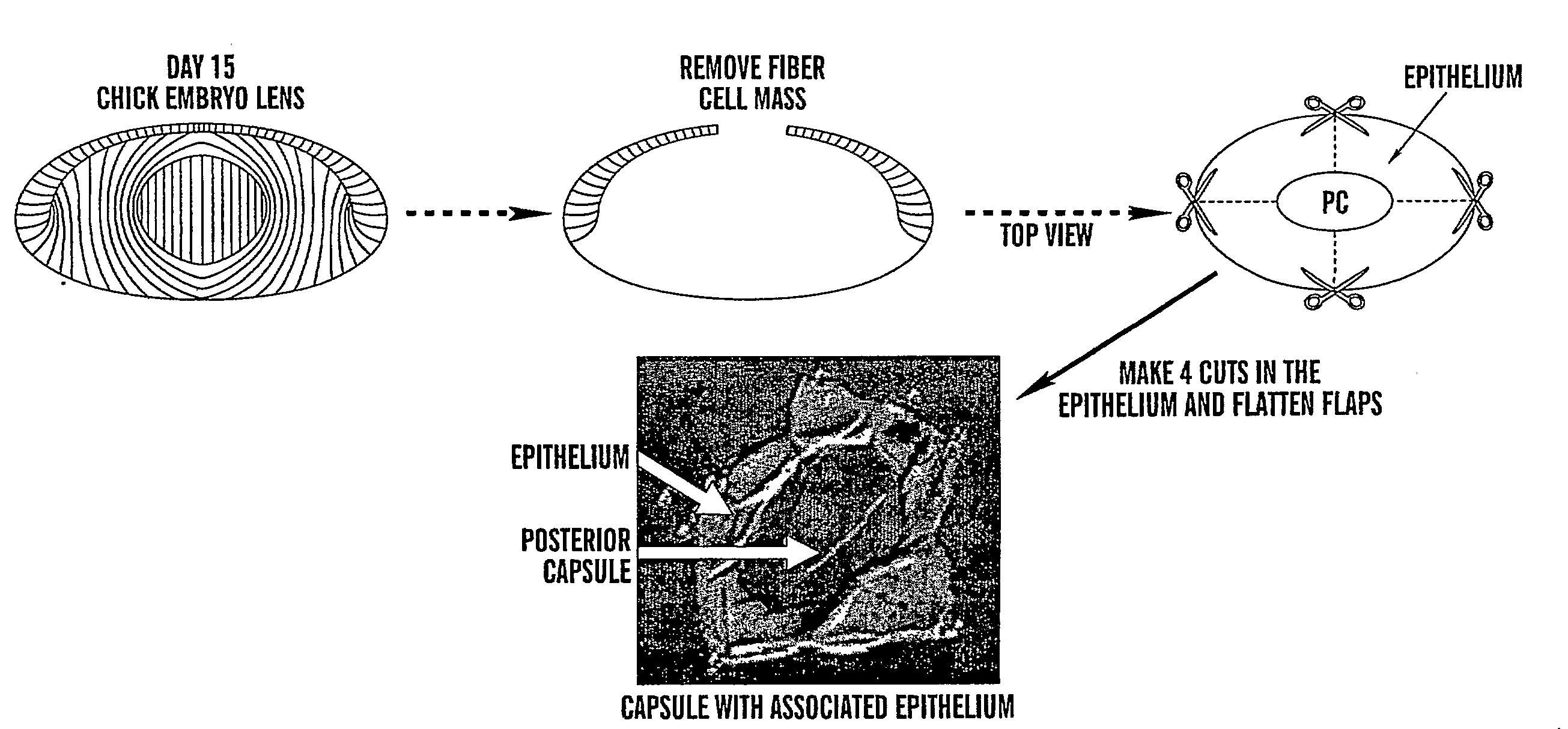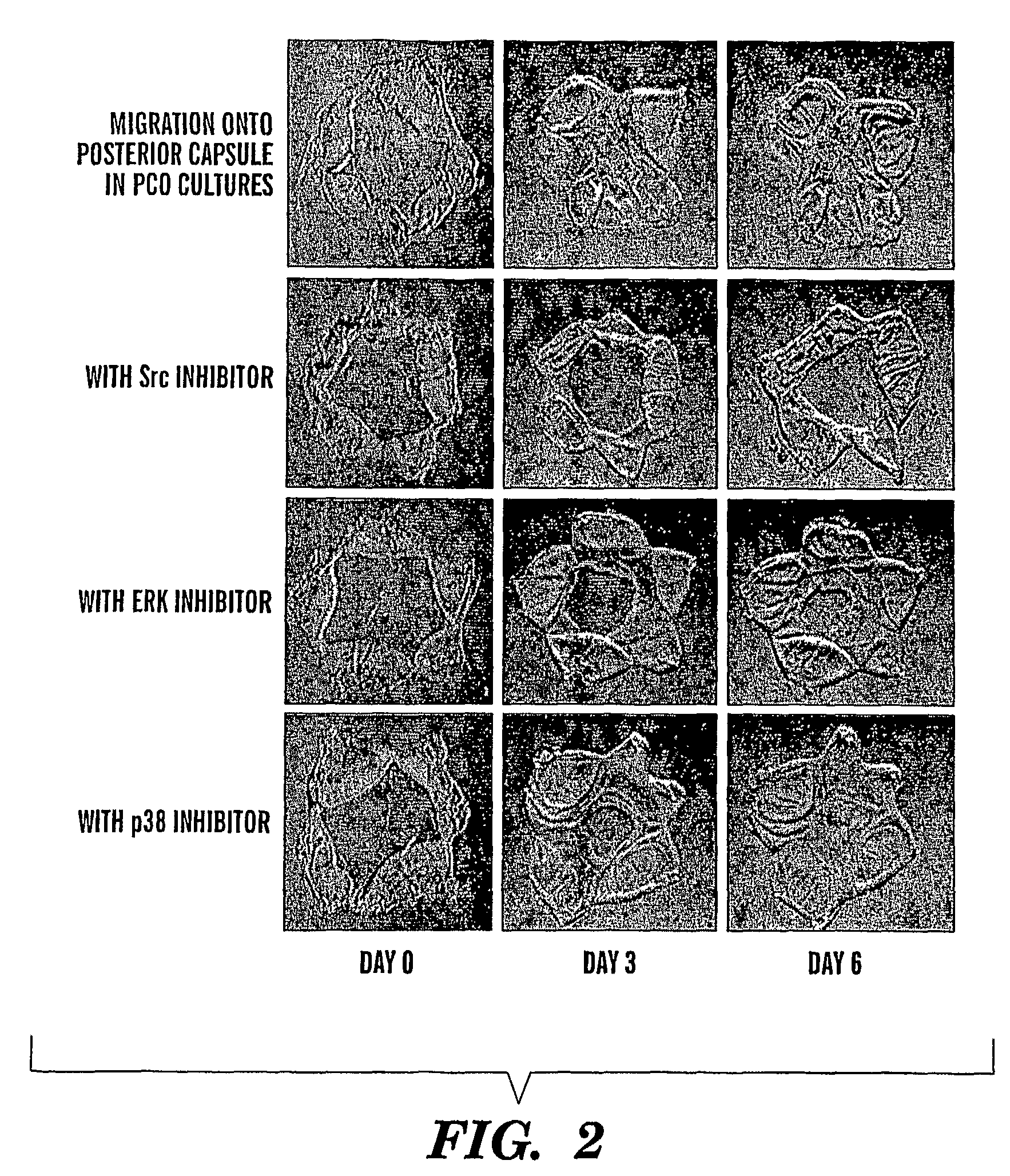Method to Treat and Prevent Posterior Capsule Opacification
- Summary
- Abstract
- Description
- Claims
- Application Information
AI Technical Summary
Benefits of technology
Problems solved by technology
Method used
Image
Examples
example 1
[0080]The purpose of the experiments described herein was to examine the signaling mechanisms involved in cell migration and epithelial to mesenchymal transformation (EMT) during the development of posterior capsule opacification (PCO).
Establishment of a Chick Embryo Lens “Capsular Bag Model” to Study Mechanisms of PCO Induction and Prevention
[0081]The capsular bag culture has proven an important model for the study of PCO. The procedure, developed by Liu et al. (Invest Opthalmol V is Sci. 1996. 37:906-914) for human lenses, mimics the preparation of the capsule in cataract surgery. We have adapted this model to the embryonic day 15 chick lens because it provides an unlimited source of tissue, making it feasible to investigate the mechanisms that induce PCO and identify likely targets for its prevention. Briefly, the fiber cell mass is removed (FIG. 1), and the lens capsule with lens epithelial cells still attached, the capsular bag, placed in culture. Cuts are made in the anterior ...
example 2
[0088]In PCO, the expression of the EMT marker α-SMA does not occur until after lens cells migrate across the posterior capsule (FIG. 4B). Migration is apparent by day 6 in PCO cultures (FIG. 4A).
[0089]Results from dose-response tests for the Src inhibitor PP1 in blocking cell migration in the PCO model are shown in FIG. 5. Dosage as low as 1.0 μM PP1 is effective at blocking cell migration associated with PCO.
[0090]Inhibition of EMT associated with PCO by Src inhibitor PP1 is effective at doses as low as 0.3 μM as evidences by inhibition of the expression of the EMT marker α-smooth muscle actin (FIG. 6).
[0091]The Src inhibitor PP1 is effective in blocking PCO long-term. PCO was inhibited in cultures exposed to the Src inhibitor PP1 only at time 0 and grown for 14 days in culture (FIG. 7). A single dose of PP1 was sufficient to inhibit PCO.
PUM
 Login to View More
Login to View More Abstract
Description
Claims
Application Information
 Login to View More
Login to View More - R&D
- Intellectual Property
- Life Sciences
- Materials
- Tech Scout
- Unparalleled Data Quality
- Higher Quality Content
- 60% Fewer Hallucinations
Browse by: Latest US Patents, China's latest patents, Technical Efficacy Thesaurus, Application Domain, Technology Topic, Popular Technical Reports.
© 2025 PatSnap. All rights reserved.Legal|Privacy policy|Modern Slavery Act Transparency Statement|Sitemap|About US| Contact US: help@patsnap.com



